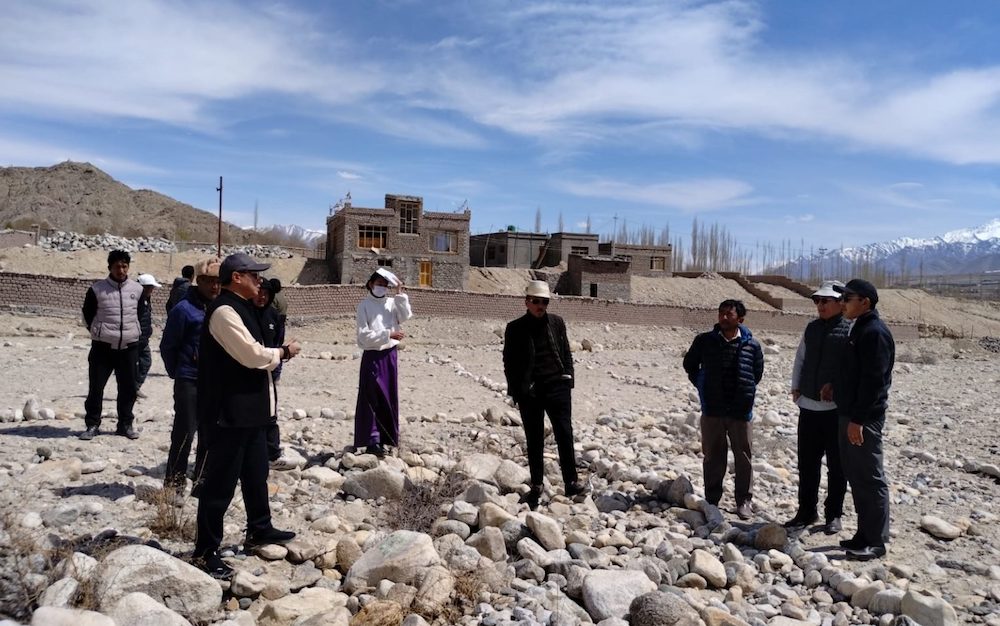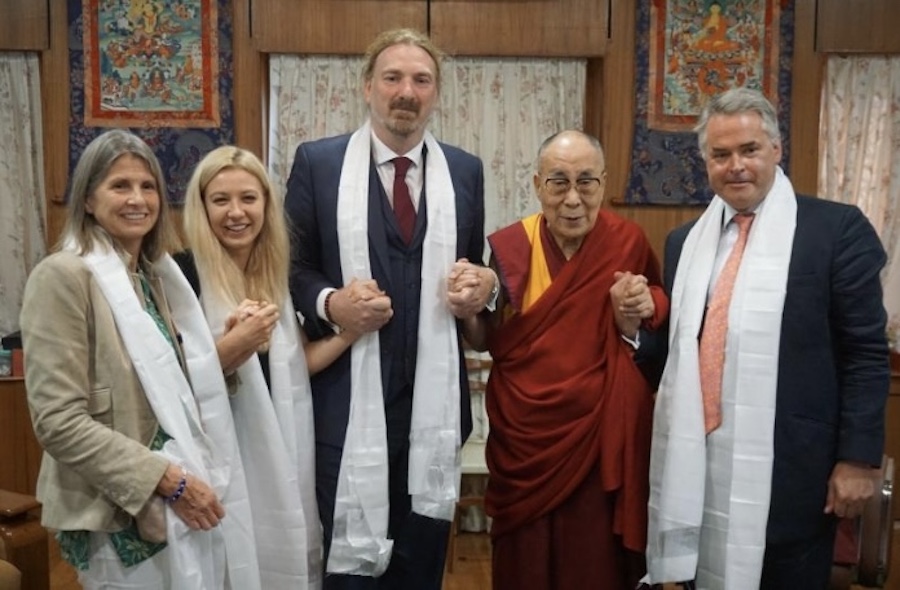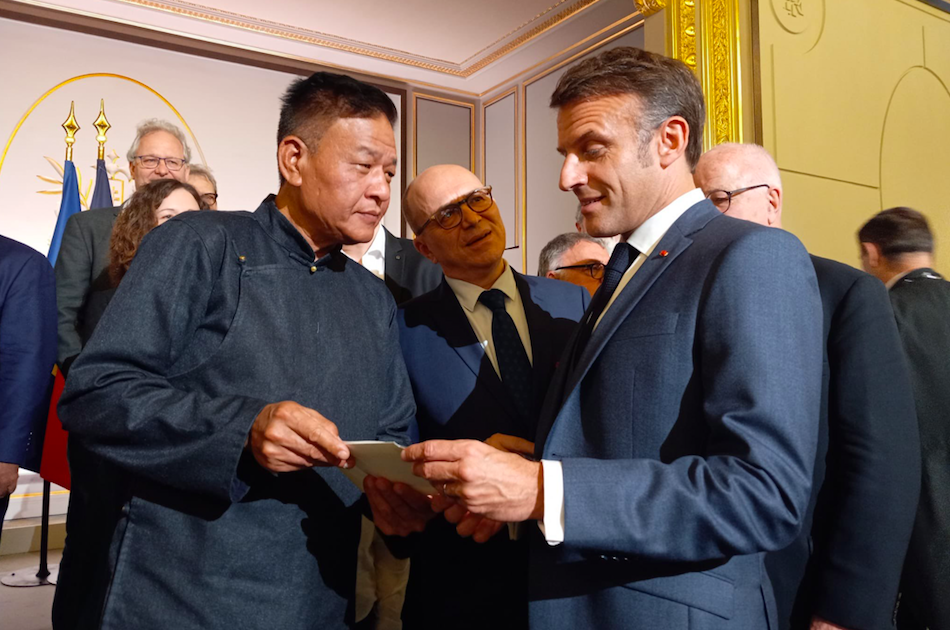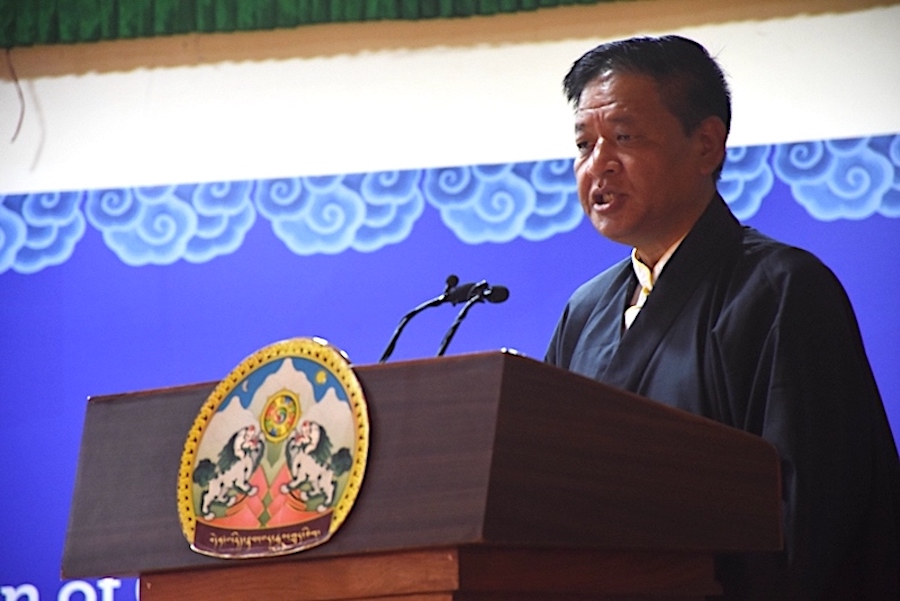Even as Beijing protests the spiritual leader’s visit to America, it is now confident enough to consider his return to Lhasa
By Melinda Liu
NEWSWEEK INTERNATIONAL
September 15 issue — The Dalai Lama landed in America to the usual swirl of praise and protest. After receiving an honorary degree from UC San Francisco last Friday, he is scheduled to meet with George Bush, attend a reception on Capitol Hill and deliver an open-air speech in Central Park to a crowd expected to number in the tens of thousands.
EVEN BEFORE THE whirlwind began, the government of Beijing’s new President Hu Jintao was protesting his planned visit to the White House and scrutinizing the Dalai Lama’s every word and deed for “separatist tendencies.” It’s a ritual that attends every one of the Buddhist leader’s visits to America, but an especially important one this year because of changes underway back in Tibet.
The Tibetan capital of Lhasa has metamorphosed into a brash Chinese city with a few pockets of traditional architecture. The 358-year-old home of the Dalai Lama, the Potala, now overlooks a glitzy five-star hotel, pulsating nightclubs and numerous brothels, most of them run by ethnic Chinese. His former bedroom window faces the future site of Lhasa’s train station, the end of the line for a new railway connecting Tibet and the rest of China. Today the Dalai Lama would hardly recognize the home he last saw 44 years ago. Even as Beijing protests his visit to America, it is sure enough of its hold on Tibet to have begun talks aimed at negotiating its exiled leader’s return. These are just talks about talks, but last week in India the Dalai Lama expressed hopes of being allowed to visit Tibet “without preconditions.” Beijing has never been more confident in its dealings with the Dalai Lama.
Now 68, the Dalai Lama fled to India after an abortive uprising in 1959. China has vacillated in its attitude toward him, from loathing to accommodating and back again, ever since. Last year, for the first time since 1983, China allowed the Dalai Lama’s official representative to visit Tibet; after two trips he came away “encouraged,” hopeful that talks on the Dalai Lama’s return will start soon. In other ways, too, China has been easing up on the brutal repression of the 1980s and ’90s, and releasing prominent Tibetan political prisoners. “Tactics have changed,” says John Ackerly, of the International Campaign for Tibet, a Washington lobby. “Now they’re more subtle and more economic in nature.”
The shift predates the rise of Hu Jintao, who became China’s new president in March, and is no stranger to Lhasa. He was Communist Party secretary in Tibet from 1988 to 1992, a period marked by pro-independence riots and a 1989 crackdown that left more than 40 Tibetans dead. Hu’s role in the repression remains murky. The civil unrest had begun before he arrived, and subsequently he spent much of his time in Beijing pleading “altitude sickness.” The Dalai Lama himself suggests the new president may be different from his predecessors. Among China’s top leaders, “Hu’s the only one who knows Tibet more thoroughly. That’s an advantage,” the Dalai Lama has said. Regarding the 1989 repression, “Hu didn’t express his personal views… so let’s see.”
The religious leader is waiting to see whether Hu’s emerging image as a populist makes him more sympathetic to Tibet’s population of 2.7 million, most of them farmers and herders. When Hu visited Lhasa in 2001, he complained about uneven cobblestones and lack of adequate plumbing in Lhasa’s traditional Tibetan quarter, the Barkhor, and ordered a $200,000 renovation project. A relative neophyte in foreign affairs, Hu could use a diplomatic achievement or two to help him emerge from the shadow of his extroverted predecessor Jiang Zemin.
The gap between Beijing and the Dalai Lama isn’t as insurmountable as it once seemed. The Tibetan governor of Tibet, Jampa Phuntsog, says that the Dalai Lama is “welcome” to return home as a citizen of the People’s Republic of China, as long as he acknowledges Tibet to be part of China. For more than a decade, the Dalai Lama has insisted he doesn’t want an independent Tibet, just an adequate degree of cultural and religious autonomy. In the end, Chinese authorities say the biggest obstacle to rapprochement is the exiled leader’s “insincerity.” “Can he really be patriotic [to China]?” asks the governor. “If so, the door is always open.”
Similar doubts still bedevil all aspects of the relationship. Authorities in Lhasa say that the late ’80s and ’90s era of pro-Dalai Lama protests and “splittist” violence is over. Next door in Sichuan province, however, two Tibetans were recently sentenced to death for alleged involvement in bomb blasts last December. Beijing also has been dishing out subsidies worth $600 per capita each year in Tibet, buying at least some measure of good will.
Not all Tibetans read Beijing’s every move as a conspiracy these days. The government is spending $3.2 billion on the new Tibet-Qinghai railway, which will run more than 1,100 kilometers and top out at an altitude of more than 5,000 meters. Some Tibetans fear the railroad as a new way for Beijing to send in more troops or more Chinese workers to take all the good jobs. (Already, Tibetans make an average $8 a day working on the railroad, less than a third of what Chinese make.) Others welcome it. In an obscure monastery in Tsetang, a monk and a devotee debated the project. “The trains will carry all of Tibet’s valuable things away, like minerals and cultural artifacts,” said the monk. The devotee, a woman who brought offerings of yak butter to the chapel, disagreed: “I work in a government scientific institution so my perspective is different. The railway will bring economic development; it’s good.”
Beijing has opened the floodgates to a homogenizing wave of Han Chinese migration. Officials of state-run enterprises have flocked to Tibet, drawn by tax holidays and other preferential treatment offered by investment-hungry Tibetan prefectures. Individual Chinese are staking their claims as taxi drivers, fruit vendors, service personnel and car salesmen. Xu Xiaotian, 25, migrated to Tibet last year, married a Tibetan woman and now sells Buicks and Chinese SUVs at the new Kang Da auto showroom in Lhasa. He says Tibetan officials “like Western cars because they’re roomy and prestigious.”
Many Tibetans seem increasingly comfortable with the modernizing influence of China. Not far from the Potala, at a nightclub called JJ’s, bilingual emcees with dyed red hair introduce entertainers who perform everything from Tibetan butter-churning rituals to Chinese love songs and Indian belly dances. Next to a neon Budweiser sign hangs a large framed photograph of the late 10th Panchen Lama who, like the Dalai Lama, is considered a reincarnate deity. “This isn’t strange,” says a straight-faced Tibetan bartender, “just because we’re an entertainment venue doesn’t mean we can’t believe in religion.”
Even the complaints about Chinese rule are changing. Whispered reports of torture and beatings are largely giving way to talk of milder abuses. Tibetans say Beijing forces monks to swear fealty to China in “patriotic education” sessions, or to spend hours shepherding tourists, instead of studying Scripture, in Tibet’s ancient monasteries. Asked about Tibet’s biggest problems, the monk and the devotee in Tsetang conferred softly before the monk spoke for both of them: “Our biggest problem is that the Dalai Lama isn’t here. We still hope he’ll return, though it seems impossible.” He seemed resigned, though, not angry. And the less angry Tibetans are, the more likely the Dalai Lama might one day be able to return home.









